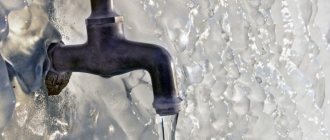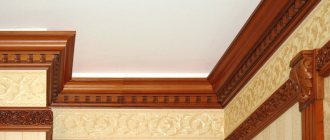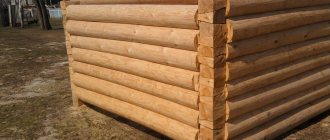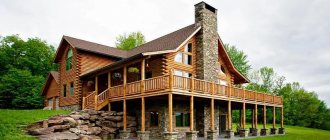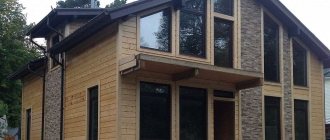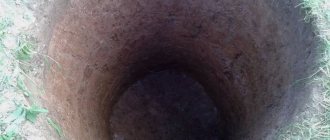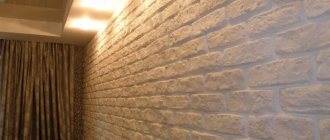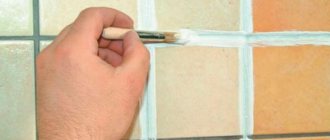A wooden house provides people with the opportunity to enjoy the comfort and coziness of environmentally friendly housing. But at the same time, wood is a living organism, and wooden buildings require more care than brick and concrete structures. Natural phenomena, such as rain, wind, sun, do not have the best effect on wood, which under their influence ages and collapses. Insects and microorganisms, which are very fond of woody structure, where they feel nourished and warm, make their contribution. Treating the outside of a wooden house with special antiseptic agents that protect the tree from the negative effects of natural and biological factors will help prevent destructive processes.
Why is it necessary to treat wood?
Living in a house made of untreated lumber poses a danger to humans, since fungi and mold appear on the wood, which are harmful to health, bugs settle in and eat the wood, and rotting processes begin to develop.
If these processes are allowed to develop uncontrollably, then after a short period of time the wooden house will become uninhabitable. Timely treatment will prevent all these unpleasant phenomena.
Any wooden house, both new and old, needs treatment. For a new building there are three stages of processing:
- Antiseptic treatment of logs and beams at the production stage or self-treatment at the construction site before the construction of the structure.
- Treatment immediately after construction.
- Coating the house with an antiseptic after going through the shrinkage process, 6-12 months after construction.
An old log house must be treated every 3-5 years, depending on the finishing method and the quality of the material.
Advantages of Neomid 440 Eco impregnation
The colorless, safe antiseptic composition Neomid 440 Eco is intended to provide protection to wooden materials from the effects of various types of mold and fungi indoors and outdoors. Also to prevent the formation of moss, lichen, algae and the invasion of various wood-boring insects on wood. Antiseptic impregnation Neomid 440 Eco can eliminate existing contamination of the material. This composition provides the treated surface with a long period of protection, which is about 25 years.
Neomid 440 Eco can be used for application to wood located in a room with high air humidity (basement, bathroom, cellar, etc.). After the treatment, the structure of the wooden material does not change. In the future, it can be easily painted, glued, etc.
Wood processing products
How to treat the outside of a log house? The answer to this question depends on what problems need to be solved using processing. There are several groups of products designed to protect the external walls of a wooden house from various negative factors:
- Antiseptics. Designed to protect wood from mold, fungi, microorganisms and insects. These drugs prevent wood rotting and also effectively combat existing foci of biological damage.
Antiseptics are presented in two types:
- Impregnating, hard-to-rinse compounds. Impregnations are deeply absorbed into the wood structure and are not washed out for years, protecting the wood from biological influences.
- Coating preparations. After treatment with these products, a protective film is formed on the surface, which does not allow moisture to penetrate into the wood. Film-forming compositions are especially relevant for bath treatment, because they are resistant to high temperatures.
- Whitening products. Designed for lightening wood. The preparations whiten areas covered with a blue coating and at the same time destroy fungi that cause darkening of the wood.
- Fire retardants. Gives wood resistance to open fire. A wooden surface treated with this product does not ignite instantly, as unimpregnated wood usually ignites, and can withstand open flames for several hours.
- Preservative impregnations. Ensures the safety of wood. Impregnating compounds are responsible for the smoothness of the surface and prevent cracking and the formation of unevenness.
- Primers. Primers have protective properties, protecting the wood from external influences. In addition, they provide good adhesion of paints and varnishes to a wooden surface. It is recommended that before painting the exterior walls of the house, coat the wood with a primer.
- Protective and finishing compounds (varnishes and paints for wood). They are primarily intended for decorative finishing of log walls, but at the same time they have protective properties.
Advantages of Neomid 400 impregnation
The antiseptic composition Neomid 400 is absolutely safe, because it is made on a water basis. The antiseptic does not contain heavy metal salts. Intended for treating wooden surfaces located indoors only. Both planed and sawn wood can be processed. This impregnation prevents the formation of wood-staining and wood-destroying fungi, mold, and rot. It also prevents the occurrence of wood-boring insects. Neomid 400 provides treated wood with a long period of protection, which is at least 25 years.
The composition of Neomid 400 during processing does not affect the structure of the wooden material, does not change its color and properties. After applying this antiseptic impregnation, the wooden surface can be easily painted or glued. If in the future it is planned to apply glaze decorative impregnation to the wood, then Neomid 400 can serve as a primer.
This antiseptic impregnation is a concentrate. Before using it, dilute the composition with ordinary water, maintaining a ratio of 1 to 5. If the wood will subsequently be located in a damp room, then it is better to dilute it in a ratio of 1 to 3. This concentrated type of impregnation allows you to save money, i.e. when purchasing 1 liter of the composition, the result will be 4 - 6 liters of finished antiseptic.
Recommendations for choosing processing tools
Exterior treatment products are used to protect the external walls of a wooden house, which are constantly exposed to harsh outdoor conditions: ultraviolet radiation, precipitation, temperature changes.
In this regard, the main requirements for antiseptics for external use are resistance to any manifestations of bad weather and provision of reliable protection of wood from adverse natural factors.
It should be noted that many types of antiseptics intended for external use have a persistent unpleasant odor and contain harmful components. For external compositions such indicators are acceptable, but when working with them you should be careful and use protective equipment.
There are products for a wooden house that combine different properties: they protect the wood from rot, mold, insects, fire and at the same time form a decorative coating on the surface. The value of such compositions is low, since they are ineffective. The best results can be achieved by using several highly specialized products.
If impregnation is required for raw wood, the moisture content of which is more than 20%, it is necessary to use alcohol-based preparations. Alcohol molecules promote deeper penetration of the antiseptic into the wood structure.
Concentrated products are much more expensive than drugs diluted in the factory. However, the consumption of the concentrate is an order of magnitude less than the ready-to-use composition. When using a concentrated drug, it must be diluted strictly according to the manufacturer's instructions.
To decide what is the best way to treat wood, you need to take into account the following factors:
- range of tasks to be solved;
- product consumption per 1m2;
- number of processing layers;
- method of applying the composition;
- resistance of the drug to natural factors;
- guaranteed service life.
- what effect does the drug have (preventive or therapeutic).
Methods for applying protective compounds
The method of application depends on what protective agent you will use to treat your log house. There are different coating methods.
- Using a roller or brush . If the mixture is so thick that it cannot be sprayed, this method is ideal (treating a wooden house with an antiseptic). But this is one of the most difficult options.
- Spraying using a spray bottle (for aqueous solutions). This procedure is carried out in a respirator and safety glasses, since many protective products contain toxic substances.
- Immersion of materials in baths with a special solution (suitable for salt impregnations).
You can purchase high-quality products for processing wood from which log houses will be built in the future, and protecting it from destruction and insects from our company; we are the official supplier of impregnations, bleaches and preservatives “Neomid” and “Prosept”.
To find out the availability and cost of the funds you are interested in, you can call us.
Types of exterior treatment of a wooden house
- Primary. Carried out by lumber manufacturers or performed during construction. It is especially important to properly treat the elements of the log house in contact with the soil, because they are exposed to moisture more than other parts. These are the lower rims of logs, piles, subfloors, foundations, external and internal walls of the basement.
- Preventive. Healthy wood is subjected to this treatment in order to prevent the formation of mold, mildew, insects and prevent rotting processes.
- Therapeutic. The treatment is carried out on a tree that has foci of biological damage. Therapeutic agents stop rotting, kill fungus and mold that have penetrated deeply into the layers of wood.
Please note that preventatives should not be applied to diseased wood. Preventive antiseptics cover the wood with a film under which microorganisms will continue to quietly multiply. Therapeutic agents can be applied for preventive purposes if the home is expected to be used in unfavorable conditions.
Do logs need additional protection?
When choosing a log for a log house, you need to think about its durability in advance.
The fact is that different processing methods greatly affect the wood’s resistance to rotting:
- Rounded logs, compared to other types of round timber, are especially susceptible to moisture; their natural protection is practically negated during processing. The fact is that during calibration, not only the bark, but also a thick layer of dense wood is removed from the trunk;
Rounded round timber has minimal natural protection from moisture and insects
Note! Sometimes, during processing, the core of the trunk even comes out on the side surface. In this case, the log has practically no natural protection, so impregnation is simply necessary, and as deep as possible.
- But debarked logs lose only their bark; a protective layer of very hard wood remains. Impregnation is also needed here, but the durability of a log house made of such material will be higher. The only thing that may confuse you is the high price of debarked round timber compared to round timber;
Barked log is the best option for a log house
- Planed logs occupy an intermediate position between debarked and rounded logs.
Impregnating wood with antiseptics not only provides protection from rot and insects, but also reveals the texture of the wood. So you can apply a layer of clear varnish on top, and the wooden surface will already look good.
You can come across recommendations not to use impregnation at all for a log house, they say the round timber will be preserved perfectly as it is. But it’s better to treat the wood, at least to preserve its appearance, and the protection will be more reliable.
If the log is not treated, it will darken over time.
Stages of external processing of a wooden house
The processing process consists of the following stages:
- Application of antiseptic. A deep penetration antiseptic is used, which is applied in one of three ways: with a roller, a wide brush or a spray gun.
- Treatment with a fire retardant is carried out two weeks after applying the antiseptic. Typically, 3-4 layers of coating are required for effective protection.
- The final finishing is carried out no later than two months after antiseptic treatment, since the protective agent can be washed off by precipitation. Finishing options: external walls can be varnished or painted, decorative plaster can be applied, or the surface can be sheathed with siding or clapboard.
What happens if you don’t process rounded logs?
Rounded logs are a very capricious material. If you don't process it, it will collapse. The main source of destruction will be microorganisms. Mold, mildew and bugs will settle in large groups inside the tree and begin to eat it from the inside. As a result, the logs will lose their aesthetic appeal and structure. Blue and black spots will appear. The house will gradually begin to collapse.
Another negative factor for rounded logs is sunlight. They heat the material very much. Rotting of weak zones and subsequent destruction occurs.
1.1 Factors of destruction and aging of logs:
- ultraviolet radiation;
- strong temperature fluctuations;
- constant gusts of wind (sudden changes in direction);
- air oxygen;
- seaweed;
- bacteria;
- flowering plants;
- large insects.
1.2 Consequences from exposure to destructive factors:
- a rounded log will lose strength;
- its mechanical and physical properties will deteriorate;
- color changes;
- rotten places appear.
Processing the ends of the log house
The ends are the most vulnerable places of the log house; intensive absorption and evaporation of moisture occurs through them, which leads to deformation and the appearance of cracks.
Therefore, treatment with protective agents is of particular importance when it comes to the ends of a wooden house. Protective compounds create a breathable film at the ends that repels moisture and regulates evaporation. Depending on the condition of the ends, the preparations are applied in three to five layers. Single processing is undesirable. It is recommended to use oil- or water-based products, for example, the water-soluble antiseptic Belinka has proven itself well.
If there are deep cracks at the ends affected by fungus and rot, it is necessary to use a deep penetration compound. It is advisable to treat with preparations that change the tone of the wood, this makes it easier to control the degree of application.
Primary treatment is carried out during construction, re-application of antiseptic is required every 5-7 years, during which time the previous coating is usually washed off.
Treatment of houses and bathhouses made of logs and timber with impregnations and antiseptics.
Stages of treating a log house with antiseptics for wood and concrete during construction and operation.
- PRIMARY treatment of a wooden house with fire retardant impregnations and antiseptics to protect the wood during the construction of the house,
- FINAL processing of a log house or bathhouse. Those. treating the house with fire-retardant antiseptics and finishing oil-wax impregnations during FINAL FINISHING at the time of putting the house into permanent use.
- RENEWAL of the protective properties of wood during operation. Those. periodic monitoring and updating with antiseptics and finishing impregnations of wooden and other surfaces to maintain the protective properties of wood and other materials and structures of the house during its constant operation in accordance with the time and recommendations of the manufacturers of protective agents that were used to treat the structures and facades of the building or AS NECESSARY.
Features of wood treatment with antiseptic
The antiseptic is applied only after cleaning, sanding and degreasing the surface to be treated.
It is best to start treating external walls from the shady side of the house. First, damaged and problem areas are treated.
If the log house was erected in the summer, the antiseptic must be applied no later than two weeks after construction.
A winter log house made from timber with natural moisture should not be treated immediately, since the composition will freeze at sub-zero temperatures, and in the spring it will thaw and be washed off. It is advisable to start work at a temperature of at least 10 degrees.
Processing of a house made of laminated veneer lumber can begin immediately after construction, regardless of the time of year.
Why is it necessary to treat the walls of premises?
Wood materials have the ability to absorb moisture. Any changes in humidity or temperature levels will lead to their destruction. Externally, this will manifest itself in the form of swelling, drying out of the walls, the appearance of cracks on the outside, or the tree may simply begin to rot.
In addition, there are a number of microorganisms that can spoil wood materials. These are fungi, algae and insects that can cause unwanted darkening of walls, as well as stains on the outside of the house and mold indoors.
It is very important to protect your home from a possible fire.
Difficulties in self-processing
Many owners of wooden houses think that preserving the external walls of a log house is an easy and simple job. Indeed, if you look at it, there is no difficulty in treating with an antiseptic, but only if the work is undertaken by knowledgeable and trained specialists who have repeatedly carried out the treatment and know all its intricacies.
If non-professionals try to do the treatment, then, as a rule, they find it difficult to choose a drug and do not know how to apply the product correctly. But the correct choice of antiseptic and compliance with the technology for its application are the most important conditions for high-quality and durable treatment.
Home craftsmen also make other unforgivable mistakes:
- due attention is not paid to surface preparation;
- one layer of antiseptic is applied, which guarantees short-term protection of the wood;
- processing is carried out at low temperatures.
All this affects the quality of processing and requires repeated work.
Antiseptic treatment of a wooden house is one of the main services provided. Our specialists carefully and thoroughly approach the selection of preparations for processing logs, taking into account all the features of a particular object. We guarantee fast and high-quality processing, which will protect your home from any adverse influences for many years.
You can leave your request or contact us using the coordinates on the “Contacts” page in a way convenient for you.
Calculate the cost of painting and insulating your home right now
Select types of work:
Select materials:
Summarizing
Processing round timber is a good way to increase its durability, and its appearance will remain for a long time. In this case, it is necessary to take into account a number of nuances, namely: selecting separate compositions for interior and exterior decoration, properly treating the ends of the logs and sealing cracks. Subject to these conditions, treatment with an antiseptic becomes absolutely harmless to humans and prolongs the life of the log house.
The video in this article describes the external processing of a log house.
How not to make a mistake with the manufacturer of protective equipment for log houses
How to treat a log house and how to make it safe and reliable for a long time? This question has become relevant for many, because a huge amount of materials are offered on the construction market. Experts have compiled several rules, following which you will never make a fatal mistake:
- All selected products must be from a trusted manufacturer only. If you make a choice in favor of a well-known brand, then the chance of making a mistake and receiving a low-quality product will be minimal. Tikkurila protective products have proven themselves to be of high quality and reasonable price.
- It is necessary to choose natural protective and fire-fighting products that do not contain preservatives.
- You should not buy products in the markets without a receipt, this increases the chance of receiving a low-quality product with toxic components inside.
- You should always read the label carefully. A good product provides protection against rot, insects, fungus, and mold.
- External treatment must be repeated after a certain period. Even if the manufacturer specifies a long shelf life, the applied composition will wash out and need to be renewed.
Why is it necessary to process the ends of logs?
Log cuts need additional protection, because first they crack, darken and change their natural shade to gray.
The reason for this is that the protruding end exposes the softest inner part of the tree.
Even in order to leave the log house in its natural state, the ends will still have to be treated with preparations. This is due to several reasons:
- Increased dampness. Open cuts are vulnerable to external factors. Longitudinal fibers absorb water more actively than transverse fibers, which is why this part of the log quickly becomes damp.
- The appearance of fungus. A large amount of moisture is the cause of mold. It softens the cut line, which is why the open ends rot and then crack.
- Uneven evaporation. Through saw cuts, moisture evaporates faster, this causes deep cracks and deformation of the crowns of the log house.
- The appearance of insects. Rapid evaporation of moisture contributes to the appearance of looseness. Because of this, the interior of the tree becomes vulnerable to temperature changes, and is also easily attacked by woodworms and other insect larvae that destroy it.
Treated ends slow down the evaporation of moisture and make this process more uniform. During shrinkage and shrinkage, the logs crack less, preserving the heat-insulating properties of the structure and its appearance.
How to process the ends of a log house
Is it necessary to process the ends of the log house? This is a question that is being actively discussed. Experts emphasize that protection of the ends should be carried out regularly, since this is the most vulnerable spot in the entire structure.
Since moisture in logs moves toward the ends unevenly along the cross grain, this can cause tension inside. As a result, cracks will appear at the crown, which will increase over time. Therefore, protection of the ends of the frame is mandatory.
The cut itself is a suitable place for the activation of fungus and rot. To avoid the harmful effects of the environment and protect the building from destruction, it is necessary to treat the ends immediately after construction of the building.
Lime will be an excellent antiseptic for ends. It can be used on the bottom layer of logs to reduce the moisture level of the wood. When building a bathhouse, it is better to process the outside ends according to this scheme:
- Antiseptics and flame retardants. These components completely destroy all microorganisms that may be present in the tree.
- Application of anti-tar primer. It does not allow resins to escape, so there will be no red spots on the surface after painting.
- Adhesive primer. It is necessary to reduce paint consumption and enhance adhesion to the base.
- Finish paint. It is designed not only to improve the appearance of the bathhouse, but also to protect against the influence of the external environment.
Houses made of wooden beams are not only fashionable, but also comfortable, cozy, and healthy. Knowing the secrets of processing logs, you can extend the life of your structure for many years.
Construction of houses
0 votes
+
Vote for!
—
Vote against!
The irresistible desire of residents of megacities to get at least one step closer to nature has led to the rapid development of suburban construction. It's not hard to understand. That the most popular form of country real estate is a wooden house, living in which is characterized by a number of advantages that living in a brick building cannot provide. Log houses and bathhouses built from environmentally friendly wood are significantly superior to buildings made from other building materials in their originality, environmental friendliness, internal microclimate and comfort. Due to the fact that increased attention is paid to suburban construction, there is probably no homeowner who does not know that in order to build a reliable house, a high-quality log house will be required. To prepare it, before starting construction it is necessary to prepare the material - wooden logs. Wood, the basis of which is cellulose, in itself is a favorable environment for the development of mold and microorganisms, and given the fact that the log house is constantly in the open air, as well as in conditions of constantly changing temperature and humidity, favorable conditions are created that accelerate damage to wood fungus and other microorganisms. To prevent premature loss of the original appearance of the building and damage to the wood by mold, it is necessary to treat the log house with an antiseptic, which is an integral stage in the construction of any log structure. How to properly treat a log house and how to choose an antiseptic - read on.
Content
- Antiseptic treatment of log logs: relevance of the problem
- What does protective treatment of a log house include?
- Exterior wood processing
- Internal wood processing
- Sanding a log house: how to mechanically process a log house?
- Fire retardant treatment of a log house: choosing a fire retardant composition
- Antiseptic treatment of a log house: a guide for the novice master
- How to choose the right antiseptic for a log house?
- How to carry out antiseptic treatment of wood? Step by step guide
Antiseptic treatment of log logs: relevance of the problem
When exposed to constant ultraviolet radiation, wood loses its original appearance, gradually discoloring and acquiring gray shades. Despite the fact that this does not affect the strength of the wood in any way, it does not bring pleasant emotions either, since the appearance of the building deteriorates irrevocably. To prevent such harmful consequences, it is enough to apply an appropriate paint or antiseptic. One of the types of bacterial damage to a log building is mold, which poses no less danger to the wood. In the old days, damage to white fungus (mold) was considered a construction “plague”, to prevent further spread of which houses had to be burned. Today, mold is no longer as terrible as it used to be, and to prevent its occurrence, it is also sufficient to carry out antiseptic treatment of the log house in a timely manner.
In addition to white fungus, there are a large number of bacterial agents that cause wood rot. These include: red, gray, green and other types of rot. But the greatest danger among them is blue rot or the so-called “blue rot”, favorable conditions for the development of which are fresh sawn wood, high humidity, poor ventilation in the premises and low ambient temperature. The presence of “blue stain”, which, spreading, can affect up to 70-80% of the wood in one week, indicates a fungal infection and indicates rapid rotting of the wood. Unlike white fungus (mold), the development of which can be stopped, there is no point in fighting “blue” fungus, and its appearance must be prevented at the stage of material procurement. And using an antiseptic will help with this.
Log houses photos
What does protective treatment of a log house include?
In addition to the antiseptic treatment of the log house, there is a need for its complex treatment, which involves a number of measures, the implementation of which will ensure comprehensive protection of the wood. There are internal and external wood processing.
Exterior wood processing
Due to the fact that the outside is constantly in the open air, it is exposed to adverse environmental factors such as precipitation, sudden temperature changes and direct ultraviolet radiation. All this has a negative impact on the quality of the material and contributes to the active growth of mold and fungi in wood, the appearance of biological pests and the acceleration of decay. To prevent this, it is necessary to carry out antiseptic treatment of wood, which will provide biological, bacteriological and chemical protection of wood. Since wood is highly flammable, it also needs fire-retardant treatment.
Another problem that needs to be solved is the appearance of cracks on the surface of the wood, which occur when the wood dries out after it is moistened, especially when exposed to elevated temperatures or when water freezes in microcracks. To prevent this problem, it is necessary to carry out additional processing of the log house, which, in addition to solving this problem, will give the building the desired decorative appearance. Grinding the frame will help solve this problem.
Internal wood processing
Due to the fact that the inside of the log house is in relatively favorable conditions, it does not require special treatment. However, this situation changes radically if we are talking about a wooden bathhouse, the internal walls of which are in conditions of high humidity and high temperatures. Taking this into account, they, like the outside of the log house, need antiseptic and fire-retardant treatment.
Wooden log house photo
Sanding a log house: how to mechanically process a log house?
Sanding a log frame, which is an integral stage of external processing, is a labor-intensive process that will require specialized skills and tools. Grinding a log house or its mechanical processing is the first stage of complex processing of a log house, which allows you to eliminate irregularities, microcracks and bark residues. In addition, a log house that has previously been sanded absorbs fire retardant and antiseptic compounds more effectively, which significantly reduces their consumption. Sanding a log house allows you to improve the appearance of the log house and effectively emphasize the natural texture of the wood.
To ensure the effectiveness of sanding, it is carried out after the surface layer of wood has dried, when the texture and color of the wood have not yet changed. It is not advisable to sand raw wood, as it contributes to picking up wood fibers and damaging the wood structure.
The easiest way to sand wood is to process it using a grinder equipped with an abrasive disc. If you want to improve the quality of processing, as well as speed up the process, you can use a grinding machine equipped with attachments that have different degrees of grain size. For final cleaning of the log house, use a fine-grained nozzle. When finished, use a vacuum cleaner to remove sawdust.
Fire retardant treatment of a log house: choosing a fire retardant composition
An equally important stage in preparing a log house is fire retardant treatment, which involves impregnating the wood with specialized compounds. The action of fire retardant compounds is based on their ability, when exposed to open fire or high temperatures, to release substances that form a foamy fire retardant layer, preventing access to oxygen and thereby stopping the ignition and spread of fire.
The most common fire retardants that have won the trust of consumers are Pirilax compounds. To treat the internal surface of log houses of saunas and baths, it is recommended to use a composition of the SS-20 brand, which can withstand prolonged exposure to high temperatures (up to 110 degrees). To treat the outside of the log house, it is recommended to use compositions of the “Lux” and “3000” brands, which can be applied either with a brush or with a spray. The component composition of fire retardants promotes their deep penetration into the wood structure, which significantly reduces material consumption. The absence of substances toxic to humans in the impregnations guarantees their environmental safety.
The compositions of the above brands are far from the only means used for fire retardant treatment of wood. Fire retardant compounds made in accordance with innovative technologies also have antiseptic properties.
Antiseptic treatment of a log house: a guide for the novice master
In order to increase the service life of the log house and preserve its original appearance, it is necessary to carry out one more stage of comprehensive wood protection - antiseptic treatment, which is carried out both from the outside and from the inside. The use of an antiseptic not only helps to extend the durability of timber and logs, but also reliably protects the log house from the effects of wood-eating insects, which can render any wooden structure unusable.
In order to carry out high-quality antiseptic treatment, it is necessary to take a responsible approach to the choice of antiseptic, which is a product that has a bactericidal and fungicidal effect, guaranteeing protection of the log house from damage by mold and microorganisms. Since antiseptic treatment is carried out from the outside and from the inside, it is important to understand the types of antiseptics, the effectiveness of which depends on their type and proper use.
How to choose the right antiseptic for a log house?
Experts suggest distinguishing between two types of antiseptics:
- Washable antiseptics intended for internal treatment of log houses and characterized by low resistance to precipitation;
- Hard-to-wash-out antiseptics , which contain synthetic and natural oils, are intended for treating the outside of the log house and are characterized by resistance to washing out under the influence of precipitation. Their only drawback is slow drying.
Today, the construction market offers a wide range of antiseptic agents from both domestic and foreign manufacturers. Due to the variety of tools presented, professionals who do not have sufficient experience may encounter a number of difficulties. To simplify the choice of an antiseptic composition, experts have proposed several rules, following which you will not go wrong when choosing an antiseptic.
Rules for choosing an antiseptic composition:
Rule #1 . Give preference to products from trusted manufacturers who have proven themselves in the construction market. By giving preference to a product from a well-known brand, you can rest assured of the quality of the chosen composition;
Important! The most popular products in demand among consumers are products of domestic brands “Neomid 200” and “Senezh”. As for foreign manufacturers, products from the Tikkurila and Teknos brands are in greatest demand.
Rule No. 2 . The following rule is relevant not only for antiseptics, but also for any other product. High-quality antiseptics cannot be cheap, and therefore experts recommend giving preference to products that are at least in the middle price category. In addition, it is not recommended to purchase products from hand, since when buying antiseptic compounds in a reliable chain store, you are less likely to encounter a counterfeit, which may turn out to be not only ineffective, but also toxic;
Rule No. 3. The label of a quality antiseptic composition must indicate that it is intended to protect against all types of biological agents: insects, fungus, rot and mold. In addition, during the sale of the product, the supplier must comply with its storage conditions;
Rule No. 4 . To carry out external treatment, it is necessary to use hard-to-wash antiseptics, which, despite a longer period of maintaining their properties, need to be periodically updated. This is due to the fact that any product exposed to moisture will be washed out and needs to renew the outer coating.
How to carry out antiseptic treatment of wood? Step by step guide
The treatment of the log house with antiseptic compounds is carried out several times, at different stages of construction. Currently, the manufacturer often offers wood that has already undergone preliminary antiseptic treatment.
Important! Despite the fact that the cost of wood that has undergone antiseptic treatment is slightly higher than that of an untreated log house, during the construction process you will save time and money, since you will not have to treat the log house immediately after assembly. Factory pre-treatment is characterized by deep penetration of antiseptic compounds, which guarantees reliable protection of the wood.
Many craftsmen ask the question: “Is it necessary to treat a fresh log house immediately after purchasing it?”, and disputes often arise regarding the processing of a log house immediately after its assembly.
Despite the fact that some builders believe that the application of antiseptic impregnations reduces the efficiency of air exchange, preventing the timely drying of the log house, this assumption is fundamentally incorrect. Modern water-based products do not reduce the environmental friendliness and quality of the log house. By carrying out the initial antiseptic treatment of the log house, you will reliably protect the log house for six months until it reaches its final drying and shrinkage, after which you can carry out the final treatment of the log house.
Important! As for the time frame for processing a log house, then, according to experts, it is better to carry out the final processing of the log house after the wood has dried (19-20% humidity), after which the final finishing can be carried out.
There are several options for processing wooden logs:
Manual processing , which involves applying antiseptic compounds with a roller or brush. Despite the fact that this work is lengthy and painstaking, applying antiseptics manually allows you to ensure reliable protection of every centimeter of wood. If you have enough time, give preference to this method, as it allows you to efficiently process the joints of timber or logs, the end parts of the frame and other problem areas;
Applying compounds using sprayers is a more modern method of antiseptic treatment, which can significantly save work time. Modern spray guns allow you to quickly distribute antiseptic compounds over the entire outer surface of the log house.
Important! While applying the antiseptic, make sure that there is not a single untreated area left. To make it easier to control the application of the antiseptic composition, you can purchase tinted products. The use of a tinted composition is advisable if in the future you plan to carry out decorative finishing.
In both cases, the antiseptic impregnation is applied in two layers. The first layer is applied after the wood has completely dried (processing in rainy weather is strictly prohibited) and is left for several days to dry. After this, re-processing is carried out. If you use a brush, the antiseptic composition must be applied evenly with even strokes, periodically changing the direction of the brush.
Recently, antiseptics based on oils or wax have been effectively used, giving the surface some decorativeness. Experts recommend using antiseptics based on wood resins, beeswax and natural oil (usually linseed).
Disputes often arise about the need to treat log buildings with antiseptic compounds. One side argues that it is better to treat natural material with chemical compounds, citing the fact that quite recently log houses were left untreated, while the other justifiably argues that the means used in modern construction guarantee maximum air exchange and extend the service life of wooden buildings.
Protective antiseptic impregnations significantly prolong the effective operation of log houses, which covers up any theoretically expected harm. The practical use of antiseptics confirms that the use of antiseptic compounds helps to maximize the preservation of the external beauty and natural color of wood, and also protects against aggressive natural factors. From a material point of view, the effectiveness of using impregnations is also justified, since it is better to spend a small amount on an antiseptic than to subsequently dismantle the log house and replace elements that have been rotted and damaged by insects.
